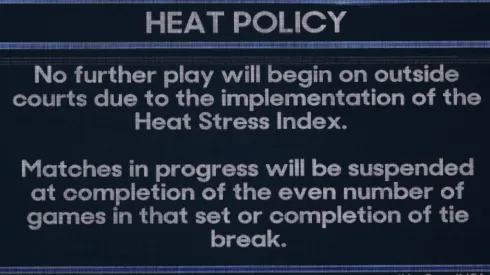In both the ATP and the WTA tours tennis players are used to participate in tournaments during the local summer season. So that means they are used to playing under high temperatures, but no other place has tougher conditions than the Australian Open in that matter. There lies the reason why they were forced to implement the extreme heat policy.
Early in the championship that was put on display because day 2 saw the activity stopped by it. The players most affected by these conditions are usually those ranked lower since they have to play in the outside courts.
For the stars there is a clear advantage there. Being scheduled in one of the three stadiums means that the delay is only of couple of minutes while the roof gets closed. Find out more about the rule that had to be implemented.
How does the extreme heat policy work in the Australian Open?
There were several games that had to be suspended on day 2 of the Australian Open because of the high temperatures. The peak was 37°C or around 99°F, which meant this rule got into effect. Specially on the outside courts things had to be delayed until it decreased.
The extreme heat policy is based on four essential factors that are analyzed to determine the Heat Stress Scale. Those are the radiant heat (strength of the sun), air temperature in the shade, relative humidity, and wind speed. These items are checked at five different points of Melbourne Park to see where they are in a scale from 1 to 5.
If the score is 4.0 the Tournament Referee must grant the players a break that varies depending on each case. It’s 10 minutes between the second and third sets in both women’s and junior’s singles matches and after the third set in men’s singles. For the wheelchair singles matches it will be a 15-minute break, all according to the official site.
Although they have to be suspended when the scale gets to 5. On the outside courts the matches that haven’t started are delayed, and the ones in progress should be suspended after an even number of games. There is another decision for the Rod Laver Arena, Margaret Court, and Melbourne Arena. Those situations can be fixed by closing the roof while the conditions stay that way.
